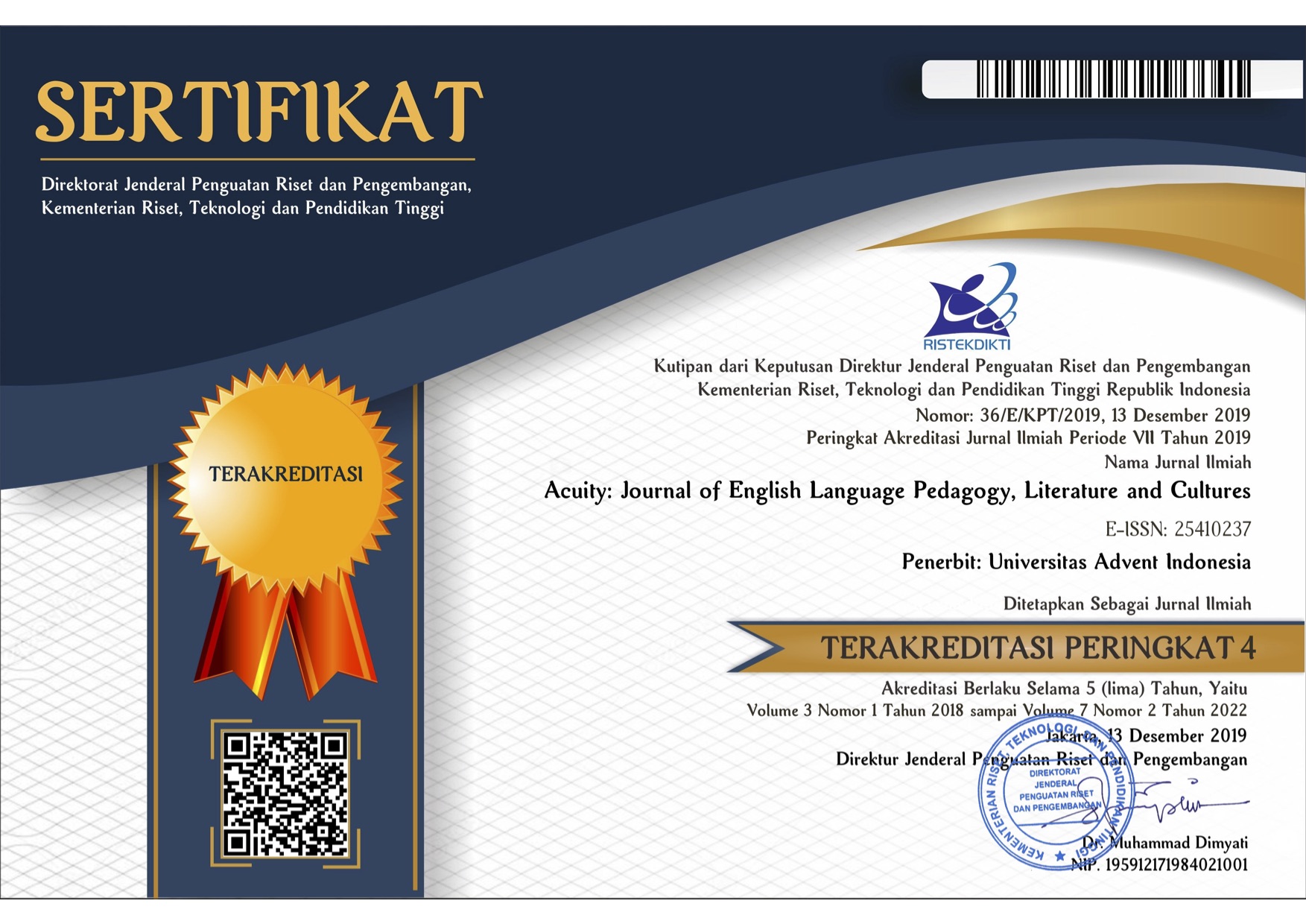ANALYSIS OF JUNIOR HIGH SCHOOL STUDENTS' MATHEMATICAL PROBLEM SOLVING ABILITY IN SOLVING STORY PROBLEMS
Keywords:
Pemecahan Masalah Matematika, soal cerita, langkah-langkah PolyaAbstract
The purpose of this study is to analyze mathematical problem-solving abilities based on Polya's steps and the causes of students' errors in solving mathematical problems. The problem-solving stage consists of 4 stages, namely the stage of understanding the problem, planning a solution, carrying out a solution plan, and looking back. This study used 3 subjects from 30 eighth grade students of SMP Negeri 1 Curugkembar. Data collection is done by tests and interviews. The subject taking technique is purposive sampling. The data analysis used is the Miles and Hubberman model in this data analysis stage consisting of data collection, data reduction, data presentation, and drawing conclusions. The results of this study are (1) For students in the good category can understand the problem correctly in working on number pattern word problems, can make a settlement plan and are able to carry out according to the stages of solving the problem correctly and can also make conclusions from the answers obtained. (2) For students in the moderate category, they are quite good at understanding the questions, but sometimes they forget to write down one of the things that are known or asked about the number pattern story problems being worked on, in making a solution plan, the formula/equation used is usually not in accordance with what done in the process of carrying out the plan. Medium category students can also make conclusions from the answers they get. (3) For students who are in the low category cannot carry out problem solving steps such as understanding the problem, preparing a settlement plan, implementing a settlement plan and making conclusions on solving number pattern word problems.
Downloads
References
Aisyah, P. N., Yuliani, A., & Rohaeti, E. E. (2018). Analisis Kemampuan Pemecahan Masalah Matematis Siswa Smp Pada Materi Segiempat Dan Segitiga. JPMI (Jurnal Pembelajaran Matematika Inovatif). Vol 1. No 5.
Agustan, S. (2017). Proses Berpikir Reflektif Mahasiswa Calon Guru dalam Pemecahan Masalah Matematika Berdasarkan Gaya Kognitif dan Gender. Disertasi tidak diterbitkan. Surabaya: Universitas Negeri Surabaya.
Bernard, M., Nurmala, N., Mariam, S., & Rustyani, N. (2018). Analisis Kemampuan Pemecahan Masalah Matematis Siswa SMP Kelas IX Pada Materi Bangun Datar. SJME (Supremum Journal of Mathematics Education). Vol 2. No 2.
Effendi, L. A. (2012). Pembelajaran Matematika dengan Metode Penemuan Terbimbing untuk Meningkatkan Kemampuan Representasi dan Pemecahan Masalah Matematis Siswa SMP. Jurnal Penelitian Pendidikan. Vol 13. No 2.
Hamzah, dkk. (2014). Perencanaan dan Strategi Pembelajaran Matematika. Jakarta: Rajawali Pers.
Hendriana, dkk. (2017). Hard Skills dan Soft Skills Matematik Siswa. Bandung: Refika Aditama.
Kementrian Pendidikan dan Kebudayaan. 2017. Buku Guru Matematika: SMP/MTs Kelas VIII. Jakarta: Pusat Kurikulum dan Perbukuan, Balitbang, Kemendikbud.
Kusmarni, Y. (2012). Studi kasus. UGM Jurnal Edu UGM Press, 2.
Laia, Hestu Tansil., Harefa, Darmawan. (2021)., Hubungan Kemampuan Pemecahan Masalah Matematis dengan Kemampuan Komunikasi Matematik Siswa. Jurnal Ilmu Pendidikan Nonformal. Vol.7 No.2
Harefa. D, dkk. (2020). Peningkatan Hasil Belajar Melalui Model Problem Based Learning Terintergrasi Brainstorming Berbasis Modul Matematika SMP. Histogram : Jurnal Pendidikan Matematika. Vol. 4 No 2
Mahmudah, Siti. (2015). Peningkatan Keterampilan Menyelesaikan Soal Cerita Matematika Menggunakan Media Kartu Kerja pada Siswa Kelas II SDN Purworejo Kecamatan Kandat Kabupaten Kediri. PINUS: Jurnal Penelitian Inovasi Pembelajaran. Vol 1. No 2.
Mairing. (2017). Kemampuan Siswa SMA dalam Menyelesaikan Masalah Sistem Persamaan Linear Tiga Variabel. Jurnal Aksioma. Vol 6. No.1.
Mairing. (2018). Pemecahan Masalah Matematika. Bandung: Alfabeta.
Nurfauziah N., & Zhanthy, L. S. (2019). Analisis Kemampuan Pemecahan Masalah Matematik Siswa SMP pada Materi Bilangan Bulat. Journal on Education, Vol 1, No 2.
Nurhayati, N., & Bernard, M. (2019). Analisis Kesulitan Siswa Dalam Pemecahan Masalah Matematik Siswa Kelas X SMK Bina Insan Bangsa Pada Materi Persamaan Dan Pertidaksamaan. Journal on Education, Vol 1. No 2.
Purnamasari, Irma., & Wahyu Setiawan (2019). Kemampuan Pemecahan Masalah Matematis Siswa SMP pada Materi SPLDV Ditinjau dari Kemampuan Awal Matematika (KAM). Journal of Medives, Vol 3. No 2.
Qausar. (2013). Analisis Kesalahan Siswa dalam Menyelesaikan Soal-Soal Sistem Persamaan Linear Dua Variabel. Jurnal Pendidikan Matematika SIGMA. Vol 2. No 5.
Rahardjo, M, dkk. (2011). Pembelajaran Soal Cerita Operasi Hitung Campuran di Sekolah Dasar. Yogyakarta : Pusat Pengembangan dan Pemberdayaan Pendidik dan Tenaga Kependidikan Matematika.
Roebyanto, dkk. (2017). Pemecahan Masalah Matematika untuk PGSD. Bandung: Remaja Rosdakarya.
Sugiyono. (2017). Metode Penelitian Pendidikan. Bandung: Alfabeta.
Sugiyono. (2018). Metode Penelitian Kuantitatif, Kualitatif, dan R&D. Bandung: Alfabeta.
Sumarno. (2010). Berpikir dan Disposisi Matematik: Apa, Mengapa dan Bagaimana Dikembangkan pada Peserta Didik.
Tim Penyusun, K. B. B. I. (2008). Kamus Besar Bahasa Indonesia. Jakarta: Balai Pustaka.
Widoyoko, Eko Putro. (2016). Evaluasi Program Pembelajaran: Panduan Praktis Bagi Pendidik Dan Calon Pendidik. Yogyakarta. Pustaka Pelajar.

Downloads
Published
How to Cite
Issue
Section
License
Copyright (c) 2023 Jurnal Padegogik

This work is licensed under a Creative Commons Attribution-NonCommercial-ShareAlike 4.0 International License.
The submitting author warrants that
- The submission is original and that she/he is the author of the submission together with the named co-authors; to the extend the submission incorporates text passages, figures, data, or other material from the work of others, the submitting author has obtained any necessary permission.
- Articles in this journal are published under the Creative Commons Share-Alike Attribution Licence (CC-BY-SA What does this mean?). This is to get more legal certainty about what readers can do with published articles, and thus a wider dissemination and archiving, which in turn makes publishing with this journal more valuable for you, the authors.
- By submitting an article the author grants to this journal the non-exclusive right to publish it. The author retains the copyright and the publishing rights for his article without any restrictions.







